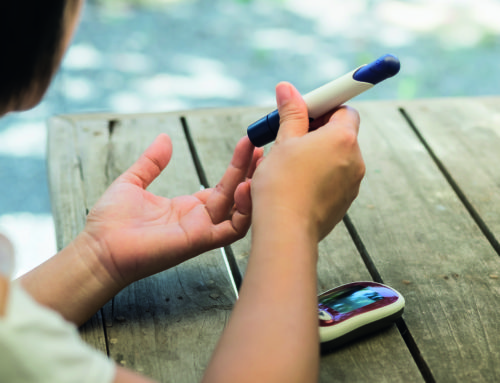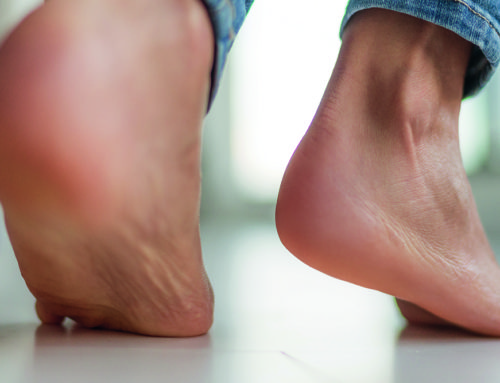For younger generations, embarrassment or social stigma surrounding mental health issues can so easily lead to confusion with what may be normal development, as opposed to the early progression of a mental health issue. As a result, intervention in teenage mental health issues is key – addressing the problems posed at an early stage. Demonstrating an innovative route for doing so, Dr Nihara Krause, Consultant Clinical Psychologist, and Founder and CEO of teenage mental health charity, stem4, depicts the impact of digital help for anxiety and depression in children and young people.
Recent research has confirmed a high prevalence of anxiety disorders and depression in children and young people (CYP). In fact, emotional disorders are the most prevalent psychiatric disorders experienced in childhood and adolescence. (1, 2)
They include a range of anxiety and depressive disorders, including generalised anxiety disorder, obsessive compulsive disorder, phobias, post-traumatic stress disorder, body dysmorphic disorder, and major depressive disorder. Anxiety disorders are more common than depressive disorders, but comorbidity for depression occurs in around 50 per cent of those who have anxiety.
A Multi-Layered Impact
Emotional disorders affect self-esteem, interpersonal development, and cause significant distress impacting on a child or adolescent’s general functioning (3) and quality of life through to adulthood. (4)
Anxiety disorders that start in childhood and adolescence often continue into adult life. (5) The Adult Psychiatric Morbidity Survey (6) carried out in 2014, and published in 2016, indicates that depression and anxiety disorders are also the most common mental health problems, affecting one-in-six of the adult population, while one-in-12 (8.1 per cent) five-to-19-year-olds have an emotional disorder. (2)
Childhood depression affects family, school, and social functioning (7), impacts on daily life (8), and is often reoccurring, especially in adulthood. (9) The lifetime prevalence of an anxiety disorder is 30 per cent.
There are a number of risk factors that underlie the possibility of developing an emotional disorder. According to NHS Digital (2017) (2), emotional disorders were more commonly found in girls than boys, with the highest rates of 22.4 per cent found among girls aged 17-to-19 years old.
CYP with special educational needs are more than three-times as likely as children without special educational needs to have an emotional disorder; while children whose parents have a mental illness were five-times more likely to be identified with an emotional disorder. Anxiety disorders and depression are more common in CYP living in households with low income. In addition, emotional disorders have complex etiology comprising of a mixture of ‘biopsychosocial’ factors, thereby amenable to a range of treatments with ‘no one size’ fitting all.
Why the Wait?
Anyone who experiences an anxiety disorder will tell you how acutely disabling it feels. However, even with such high prevalence and impact, anxiety disorders are under-diagnosed and under-treated in the UK. The NHS crisis in the provision of adequate mental healthcare is well-publicised. Years of underfunding have resulted in mental health services being poorly resourced. This creates a bottleneck for treatment; the long wait for treatment is also likely to lead to more complex problems, which in turn necessitates more specialist and longer-term intervention. The NHS is at breaking point, especially so in Child and Adolescent Mental Health Services (CAMHS).
stem4’s recent survey (2018) (10) of 1,000 GPs found that most (90 per cent) think that mental health services for young people are inadequate, with nearly all (99 per cent) fearing that children in their care could come to harm while waiting for specialist treatment.
In such circumstances the NHS has had to unofficially perform triage when it comes to crisis-level mental health conditions. As a result, CYP suffering from anxiety disorders ‘lose out’. Under current government funding proposals, new services to tackle rising mental ill health among CYP are being developed, but the wait is long in the face of an urgent need for good quality, comprehensive services. Even under these new funding proposals it’s unlikely that a robust programme for anxiety disorders will be rolled out in the near future. Anxiety disorders are very responsive to early intervention in the form of evidence-based treatments, such as Cognitive Behaviour Therapy (CBT), but in many local areas services of this kind have been cut, denying young people access to expert treatment.
Taking Digital Strides
stem4 is a London-based, teenage mental health charity I founded seven years ago. It offers early detection through mental health education in secondary schools and early digital intervention.
Based on the requests made by many students, and awareness of need observed in the course of my own clinical practice, I developed Calm Harm for stem4 in 2017 – a mobile phone app to help young people manage their urge to self-harm.
Calm Harm helps by using strategies from evidence-based dialectic behaviour therapy, and aims to teach CYP impulse control, emotional regulation, and tracks underlying triggers to harmful urges. It also helps to self-monitor. Calm Harm has met NHS Clinical Governance standards to be included on the NHS app library.
Incredibly, in the 18 months since its launch, Calm Harm has had close to 900,000 downloads worldwide – promoted by young people for young people. It is mainly used by young people under the age of 19, and 93 per cent of them report that their urge to self-harm passed after each use of the app.
The self-reflection section indicates that the most common reason why CYP self-harm is because they ‘feel sad’.
Scoring 4.7-out-of-five on the app store, many users write in with positive comments. One such comment includes, ‘I would like to say a humongous thank you to the creators of the Calm Harm app. I’ve used it many times to avoid hurting myself and have recommended it to friends. It has helped massively and I find the coping strategies extremely helpful and they work very well. I also love how easily accessible everything is! It’s all very organised and quick and easy. One of my favourite things about the app is that you do not need to be able to access Wi-Fi to use this so it’s a massive help when I’m not at home. Again, a huge thank you to everyone who created and run this app, you’ve saved my life, literally! And I’m guessing so many more. You are the reason I’m still here guys and I will never ever be able to thank you enough. I love you all guys and once again, thank you.’
In 2018, based again on requests from young people and by the users of Calm Harm, I developed Clear Fear for stem4. This is an app to help CYP manage symptoms of anxiety using the principles of CBT. Clear Fear aims to provide CYP with tools to help them negotiate some of the challenges they may face. It does this by offering them relaxation training, self-monitoring, and ways of challenging negative thoughts and solving problems. It also harnesses the benefits of humour, provides them with inspirational quotes and examples of inspirational people, and endeavours to help them find the ‘grit’ they need to keep going when the going gets tough. Released in December 2018, it is too early to comment on uptake, but on the first day of release the reach on Facebook was 3,800.
While Calm Harm was initially developed through fundraising and then an NHS Digital grant to meet NHS app store requirements, Clear Fear has been part funded by a Tech for Good grant by Comic Relief and the Paul Hamlyn Foundation, as well as generous fundraisers. stem4 continues to want to offer the app free to CYP and is exploring various models to monetise updates. In addition, there are plans to extend the stem4 library of self-help apps using the same formula – developed using a clinical framework and with ideas and input from young people.
While digital therapies should not be seen as a substitute for face-to-face engagement, assessment, and treatment, a handful of studies confirm that online CBT is as effective as face-to-face treatment for anxiety and depression. It therefore constitutes a first step in helping young people self-monitor and benefit from simple techniques for anxiety management. Calm Harm and Clear Fear may be of benefit to those CYP who do not reach the threshold for acceptance to CAMHS, for those who are on a waiting list, or to use in conjunction with treatment. stem4 will use app analytics as well as a research study to further confirm effectiveness.
For more information, visit www.stem4.org.uk, www.clearfear.co.uk, and tweet @clearfearapp.
References
1. Merikangas, K., Nakamura, E., and Kessler, R. (2009). Epidemiology of mental disorders in children and adolescents. Dialogues in Clinical Neuroscience, 11(1), pp. 7-20
2. NHS Digital’s survey ‘Mental health of children and young people in England 2017’, MHCYP 2017: Emotional disorders – Tables. Last accessed 18 12 18
3. World Health Organization. (1993). The ICD-10 classification of mental and behavioural disorders: diagnostic criteria for research (Vol. 2), WHO: Geneva
4. Mendlowicz, M.V. and Stein, M.B. (2000). Quality of life in individuals with anxiety disorders. American Journal of Psychiatry, 157(5), pp. 669-682
5. Ginsburg, G.S., Becker-Haimes, E.M., Keeton, C., et al. (2018). Results from the Children/Adolescent Anxiety Multimodal Extended Long-Term Study (CAMELS): primary anxiety outcomes. Journal of the American Academy of Child and Adolescent Psychiatry, 57(7), pp. 471-480
6. Stansfeld, S, Clark, C, Bebbington, P, King, M, Jenkins, R & Hinchliffe, S (2016) Chapter 2, Common Mental Disorders, in S. McManus, P. Bebbington, R. Jenkins, & T. Brugha (Eds) Mental health and wellbeing in England: Adult Psychiatric Morbiditiy Survey 2014, Leeds: NHS Digital
7. Bhatia, S.K. and Bhatia, S.C. (2007). Childhood and adolescent depression. American Family Physician, 75(1), pp. 73-80
8. World Health Organization. (2017). Depression and other common mental disorders: global health estimates, WHO: Geneva
9. Kessler, R.C., Avenevoli, S., and Merikangas, K. (2001). Mood disorders in children and adolescents: an epidemiologic perspective. Biological Psychiatry, 49(12), pp. 1002-1014
10. stem4 (2018), Krause, N., Survey of 1,000 regionally representative GP’s across the UK carried out by MedeConnect Healthcare Insight between 14th and 28th November 2016. Last accessed 18.12 18








